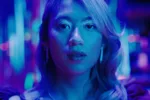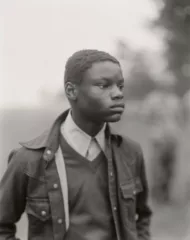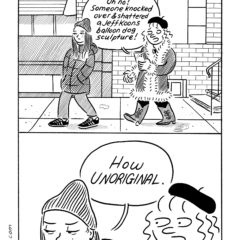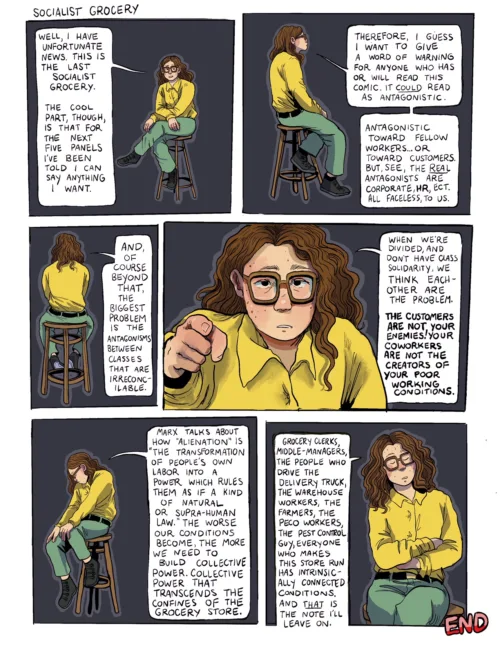Authors Introduction
The two of us recently drove down to Washington, D.C., with three primary art objectives in mind: to see the Paris 1874 Impressionist exhibition at the National Gallery; to see the exhibition Faces of the Republican Party at American University; and to make our first visit to the relatively new Glenstone Museum in Potomac, Maryland, just outside of the District. One of the great things about DC (at least for now) is that the national museums, which are top quality, offer free admission. In terms of the visual arts, a visitor can easily fill two days with visits to the National Gallery (and its contemporary-oriented East Wing), the Hirshhorn, the National Portrait Gallery and the Smithsonian American Art Museum (both sharing the amazing building that was formerly the U.S. Patent Office), the museums of African and Asian Art, and the American Indian Museum.
National Gallery
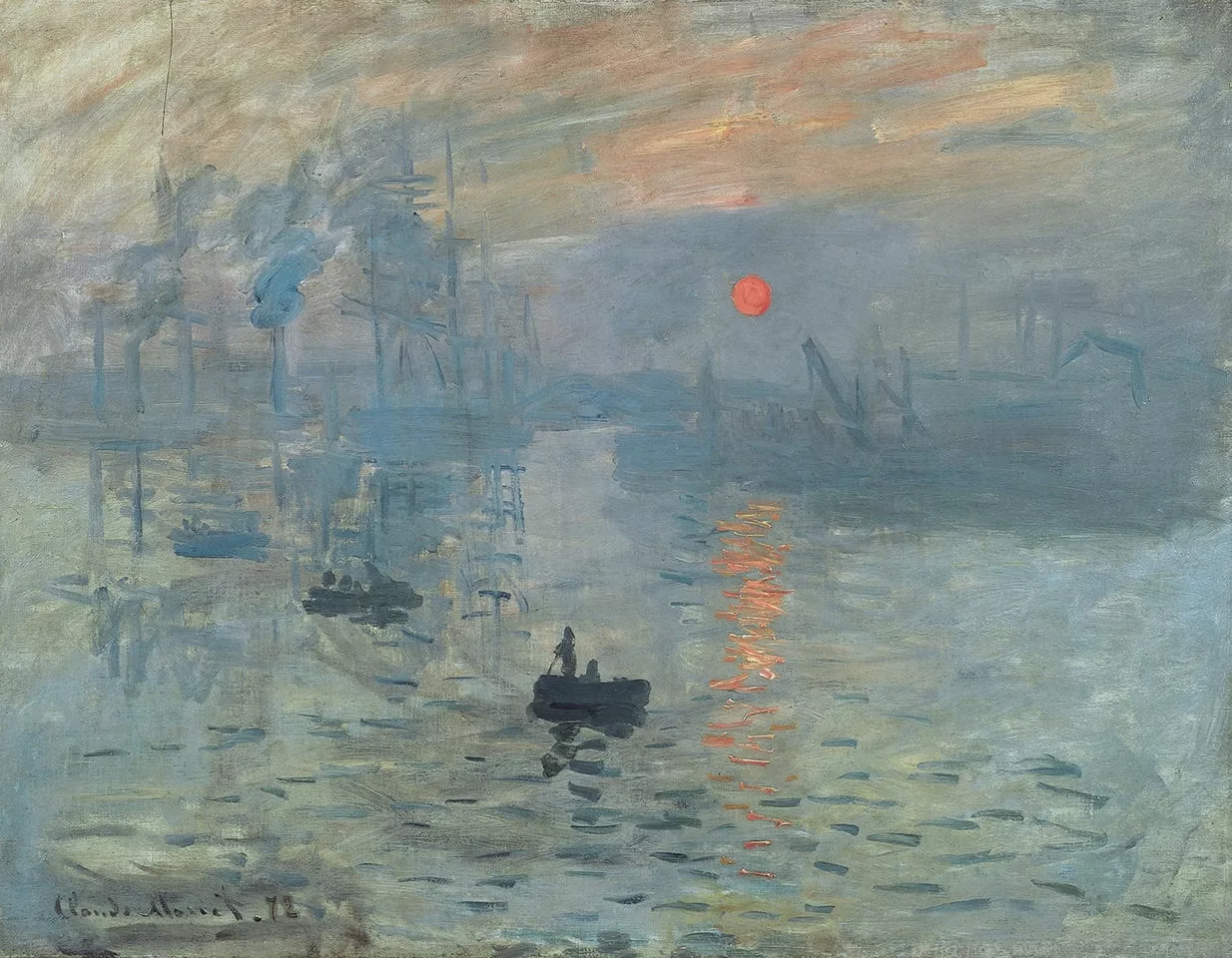
The current marquee exhibition at the National Gallery is Paris 1874: the Impressionist Moment. One-hundred fifty years ago, a show that included a style of art that would become known as “Impressionism,” was held in Paris under the name Société Anonyme des Artistes Peintres, Sculpteurs, Graveurs, etc. It featured thirty artists and was set up as a counter-exhibition to the gigantic annual Paris Salon, which hosted over 2000 artists and half a million visitors.
The Paris 1874 exhibition sets up a comparison between the Salon and the Société — in fact, the curators challenge visitors to deduce for each work on view whether it was part of the Salon or of the Société.
The Société exhibition came to be known as the First Impressionist Exhibition and was followed by seven more, through 1886. Interestingly, most of the artists in the 1874 show were not actually Impressionists. The exhibition has often been categorized as a Salon des Refuses, and it is true that some of the exhibitors, including Monet, Manet, Renoir and Cezanne, had not been selected for the Salon. But there were also artists who showed in both exhibitions, one of them, surprisingly, a woman, Berthe Morisot.
Paris 1874 includes works in the National Gallery’s collection. In addition, other works that had been in either of the two 1874 Paris exhibitions were brought from museums around the world. One of these is Monet’s “Impression, Sunrise.” (It was a negative reaction to this painting that caused the art critic Louis Leroy to coin the term “Impressionism.”)

Another featured work is Jean-Léon Gérôme’s1873 painting in grand historical style, “L’Eminence Grise,” which won the Salon’s grand prize in 1874. And the intelligence of the National Gallery installation is evident in the fact that Gerome’s “L’Eminence Grise” and Monet’s “Impressionism: Sunrise” are the first two paintings seen by visitors, displayed side-by-side.
One of the most impressive things about the National Gallery exhibition is that it presents a great deal of historical and cultural context for the two 1874 exhibitions including the fact that Paris was a city just beginning to recover from the devastations of the Franco-Prussian War (1871) and the Paris Commune that followed it.
Another component of the show that impressed us wasn’t even in the exhibition proper: two large photographic projections were on view for visitors waiting to enter the exhibition, and these were quite amazing. Digital animator Andrey Zakirzyanov, working with custom A.I. tools, created very believable 3D animations from photographs and paintings featured in the exhibition, giving viewers a convincing sense of a living Paris of 1874.
Paris 1874 is on display through January 19, 2025, (which happens to be, perhaps not coincidentally, the last day of the Biden Administration).
American University Museum
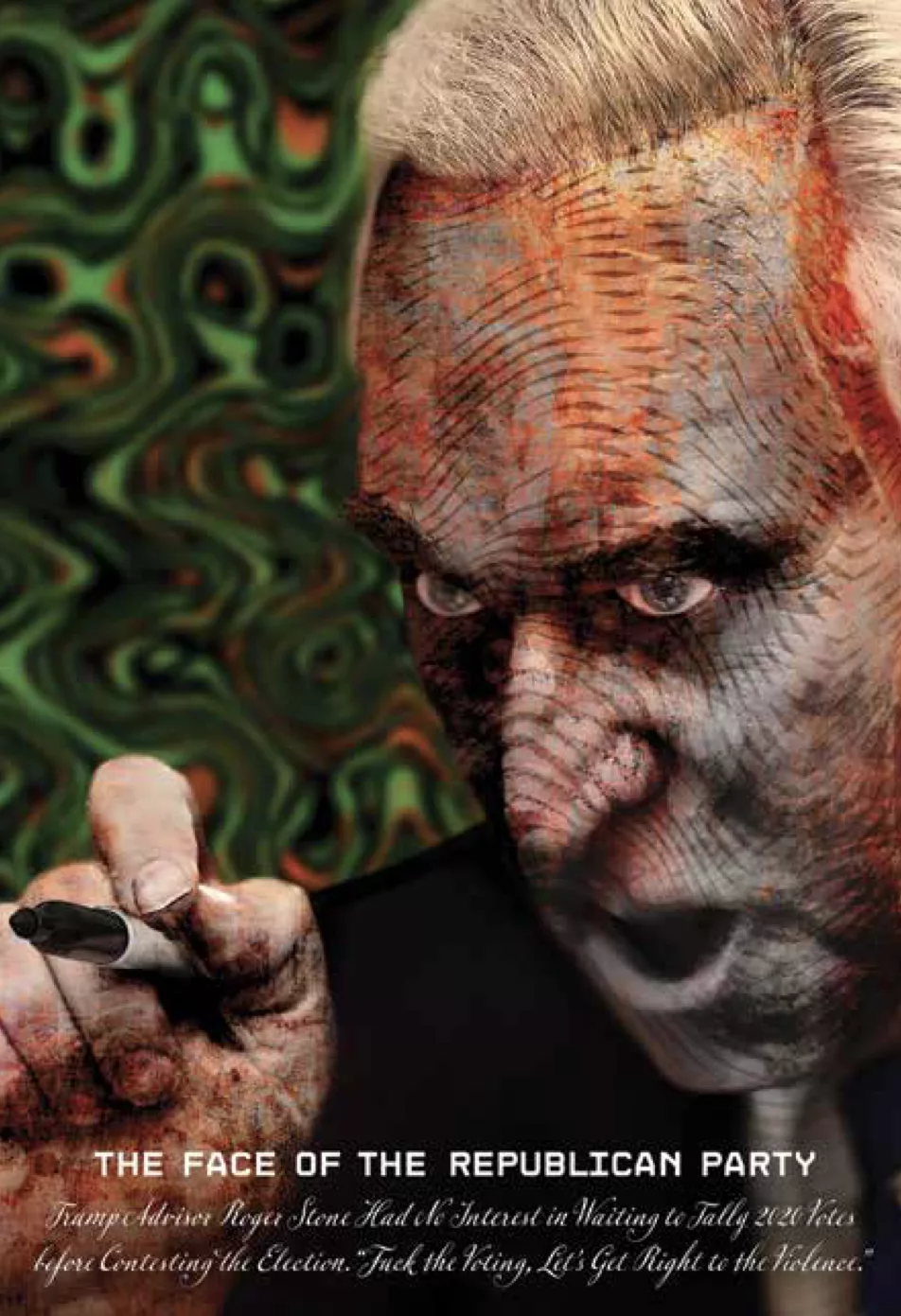
At American University we saw an exhibition that was truly as different as possible from Paris 1874. Faces of the Republican Party features 43 provocative portraits created by artist Jeff Gates, that depict prominent right-wing figures. Each portrait (digital collage, 23×16 inches) is based on a statement by the person depicted. Gates sees these statements as ugly and, accordingly, makes the portraits ugly. He starts with one or more photographs of the person and then goes through a complex process of layering, distorting, coloring and adding additional elements to create a visual representation that embodies the anger and disdain that seem to be transforming the person — literally — into a demon.
One example is Gates’s portrait of Roger Stone featuring a statement Stone made just after the November 2020 election while votes were still being counted: “Fuck the Voting. Let’s get right to the Violence.” Visually, Stone is depicted with wild glowing eyes, a gaping mouth, a pattern of lines on his face evoking Maori warrior tattoos, and a marker in his hand being wielded like a weapon about to poke someone’s eyes out. Other figures depicted include Matt Gaetz, Michael Flynn, Rupert Murdoch, Greg Abbott, Rona MacDaniel and Donald Trump himself.
These are very strong works. Made during the past three years, they have perhaps become even stronger after Trump’s election. A viewer has to admire the courage that American University has shown in exhibiting them.
Faces of the Republican Party closed December 8, 2024. A PDF of the exhibition catalog is available for download.
Glenstone Museum
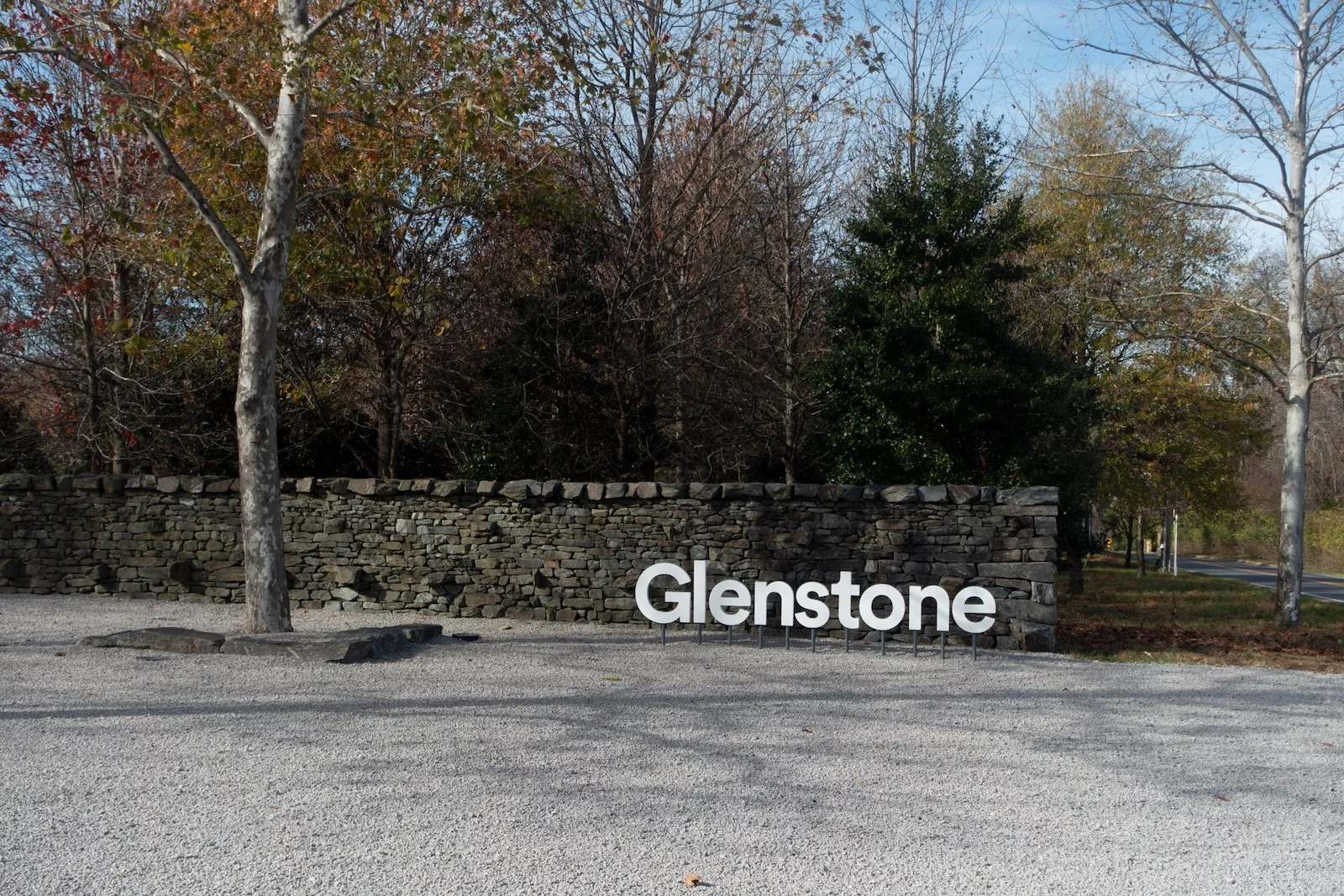
Our experience at the Glenstone Museum was, yet again, very different – from both exhibitions that we had seen earlier.

Glenstone, which opened in 2006, is the project of two very wealthy art collectors, Mitchell Rales and Emily Wei Rales, who have spent more than $2 billion on it. The grounds encompass 300 acres of meadows and woodlands, traversed by walking paths and streams. Separate from the art on display, this beautiful outdoor setting is clearly a masterpiece of landscape design. A number of modern, minimalist structures have been worked into the landscape: a small museum (called the Gallery), a larger museum (with over 50,000 square feet of exhibition space, called the Pavilions), a building dedicated solely to a Richard Serra work, a restaurant, various service units, and the Rales’s own residence. All the buildings were designed by Charles Gwathmey and Thomas Phifer.
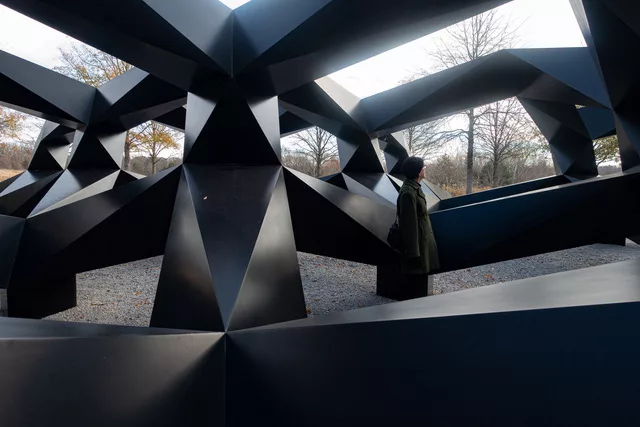
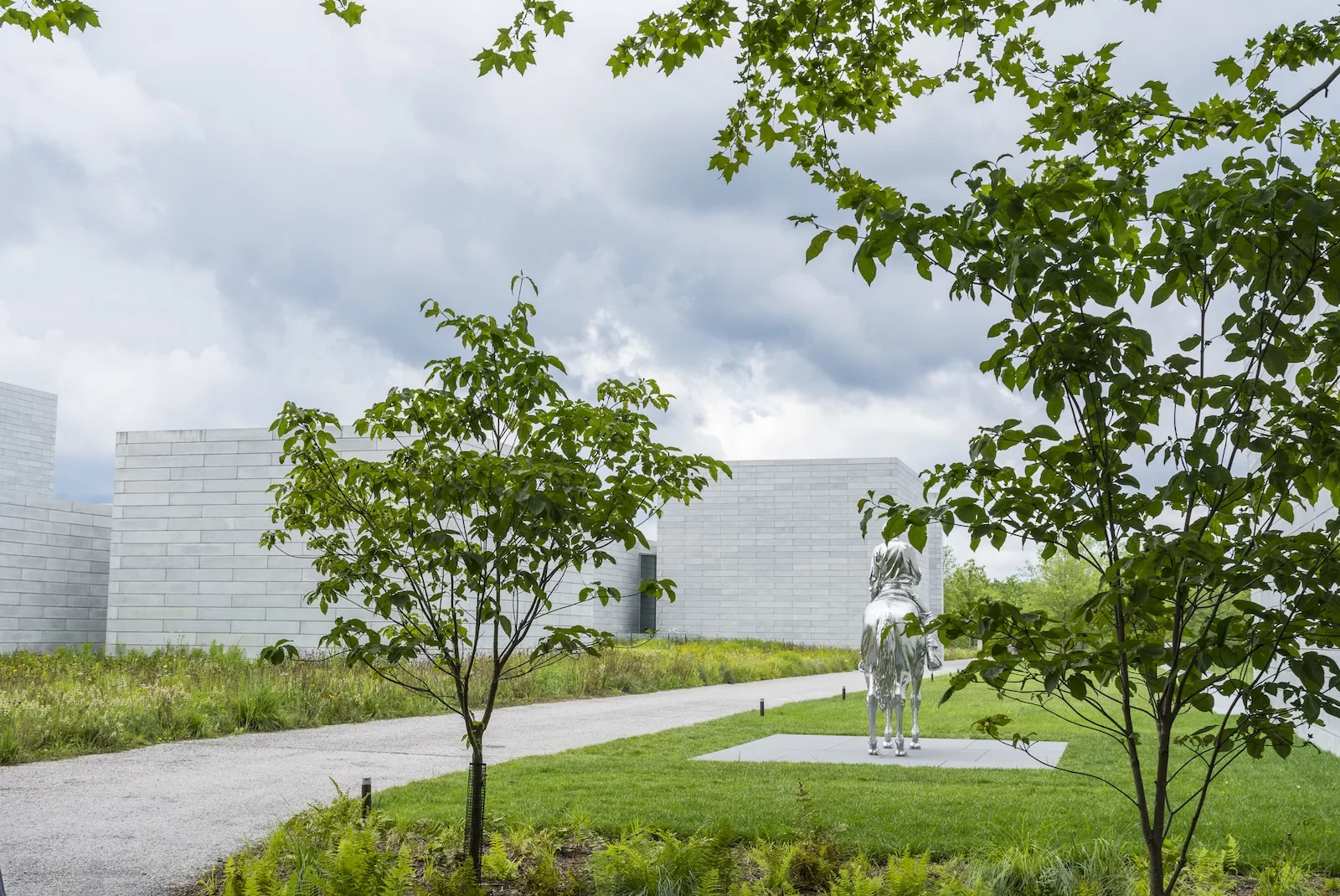
The Glenstone esthetic seems to be to give lots of breathing room to its major outdoor sculptures. There are only about a dozen works, spread around the site. They include large pieces by Richard Serra, Tony Smith, Jeff Koons, Simone Leigh, Charles Ray, Felix Gonzalez-Torres, Michel Heizer and Ellsworth Kelly, an odd small piece by Robert Gober (two porcelain sinks half-buried in the woods), and — our favorite — a set of three small stone huts (Clay Houses) designed by Andy Goldsworthy, each containing a work made of naturally drying clay. And, easily holding its own as a sculptural “work,” is a crazy set of boardwalks through the woods designed by PWP Landscape Architecture (which also did the bulk of Glenstone’s landscape).
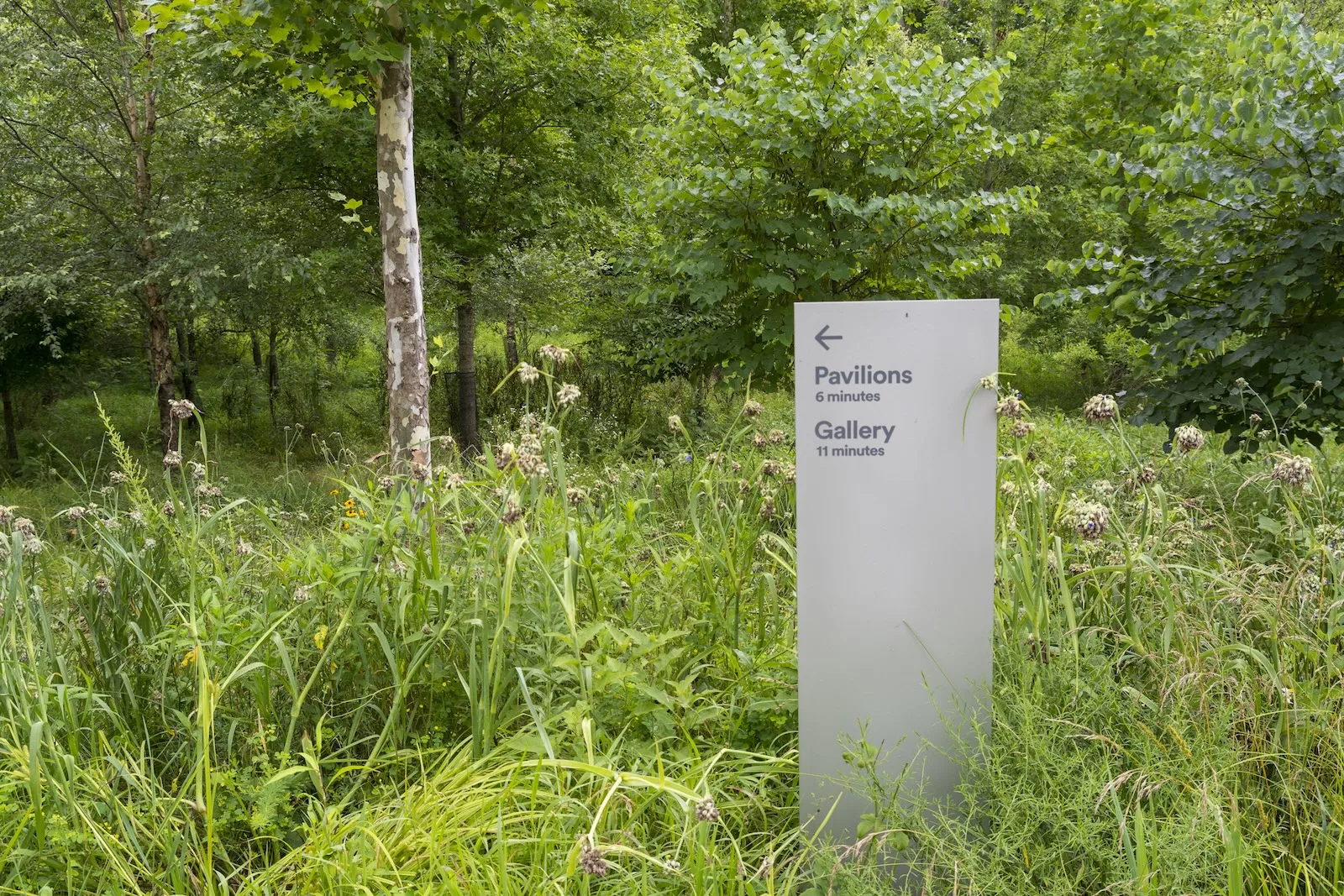
The indoor works were less impressive. The Gallery presents a sampling by contemporary artists who could be characterized as the same old suspects, and they are not always top-quality examples. (One exception is a very wry “closet” by Robert Gober, built right into the “white cube” wall.) The Pavilions are very minimalist in architectural style, austere and even foreboding, with the exhibition spaces widely separated along long dark underground hallways. Unfortunately for us, the main artist on display was Cady Noland, whose work leaves us underwhelmed. (Apparently the Rales have amassed the largest collection anywhere of Noland’s work.)
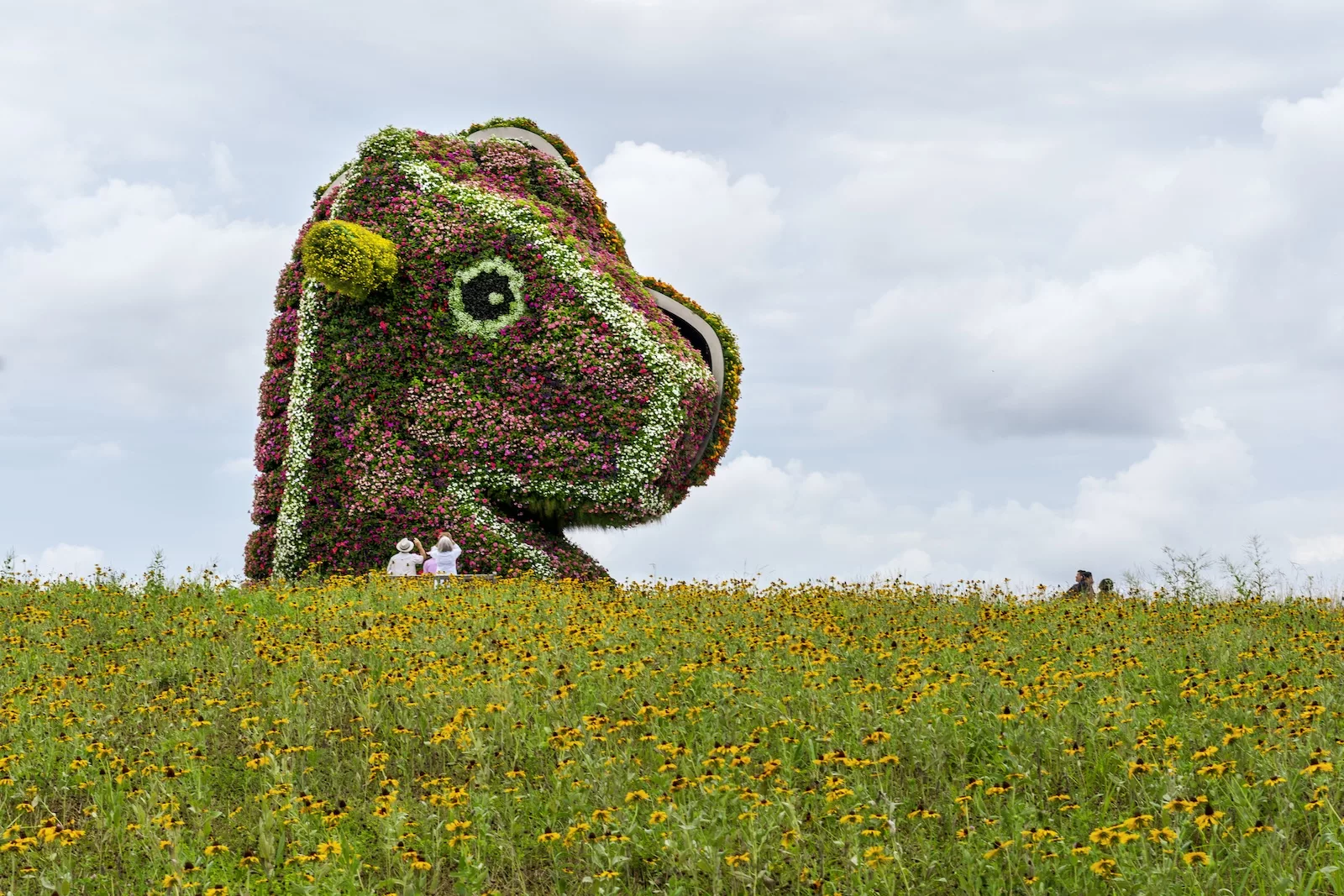
Glenstone struck us as a blend of Storm King, Dia Beacon and the New Jersey Pine Barrens. It is definitely worth a visit. And, while you’re there, take a ride around nearby Potomac, Maryland. It features two of the wealthiest neighborhoods in the U.S. Comically, some of the largest houses (mansions with twelve, sixteen or even more rooms) are crammed into relatively small lots just like typical row houses in Philly!
BTW . . . In doing research for this piece, we discovered something linking our last stop, Glenstone, with our first stop, the National Gallery: Mitchell Rales was president of the National Gallery from 2019 to 2024.
Read more articles by Blaise Tobia and Virginia Maksymowicz on Artblog.


